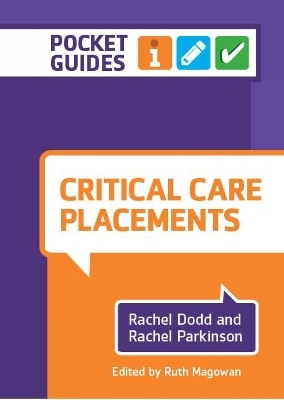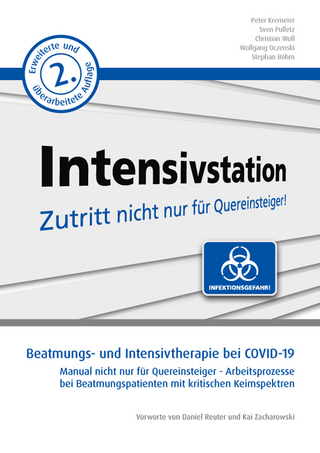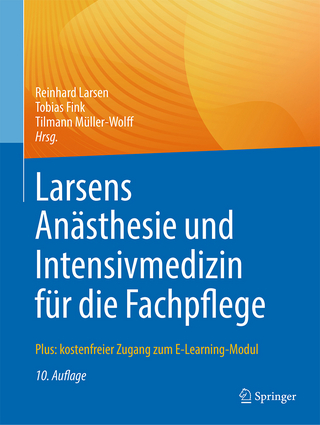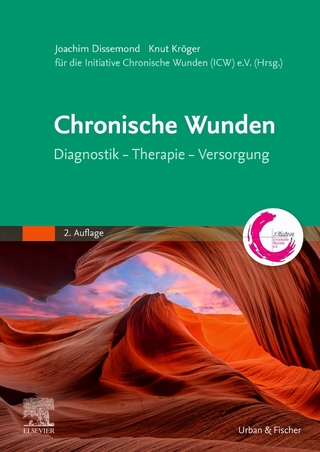
Critical Care Placements
Lantern Publishing Ltd (Verlag)
978-1-908625-81-6 (ISBN)
Clinical placements can be intimidating to the unprepared. This pocket guide is designed to make critical care health placements less stressful and to help student nurses get the most out of their time in the critical care setting.
A pocket-sized guide to help nursing students prepare for their critical care placement.
Critical care placements can be daunting – you’ll be working in a demanding setting and caring for people when they are critically ill and at their most vulnerable. There is a large amount of new information to take in, and newly learned nursing theory to put into practice. This pocket guide is designed to make your placement a less stressful and more rewarding learning experience.
From advanced life support to urinalysis, via myocardial infarction, it’s full of practical detail, hints and tips.
Written by current nursing students and edited by a senior lecturer – this guidance is really produced with you in mind.
Pocket-sized format – carry it with you at all times.
Space to make your own notes – be it new information, unfamiliar terminology, or just the names of your new colleagues
Reduce your stress and make the most of your placement by having this book to hand from the start.
Pocket Guides is a series of handy, pocket-sized books designed to help students make the most of their practice learning experiences.
Ruth is a senior lecturer and currently the programme lead for the Master’s in Nursing at Queen Margaret University, Edinburgh. It is important to her to continue to practice as a nurse while working as a nurse lecturer, so Ruth also works at the Borders General Hospital as a Paediatric Endocrine Specialist Nurse. She has a background in both paediatric and general nursing including neonatal care, neurology, diabetic care and endocrinology.
Introduction
1. How to use this book
2. Person-centred care
Advanced Life Support and assessments
3. Advanced Life Support
3.1 Cardiac arrest definition
3.2 Basic Life Support
3.3 Management of cardiac arrest
3.4 Correct placement of defibrillation pads
3.5 Four Hs and four Ts
3.6 Effective CPR
4. Assessments
4.1 ABCDE assessment
4.2 Trauma assessment
Common conditions in critical care
5. Shock
5.1 Types of shock
5.2 Stages of shock
6. Sepsis
6.1 Signs and symptoms of sepsis
6.2 Treatment of sepsis
7. Cardiac emergencies
7.1 Angina
7.2 Myocardial infarction (MI)
8. Stroke
8.1 Signs and symptoms of stroke
8.2 Assessment of stroke
8.3 Treatment of stroke
9. Fractures
9.1 Types of fracture
9.2 Signs and symptoms of fracture
9.3 Assessment of fracture
9.4 Treatment of fracture
Toolkit
10. SBAR handover
11. Tests
11.1 Understanding ABGs
12. GCS and pupil observations
12.1 GCS
12.2 Pupil observations
13. Urinalysis
13.1 Methods of collecting urine
13.2 Physical appearance
13.3 Urine analysis
14. ECG types, diagram and reading a rhythm strip
14.1 Why use cardiac monitoring?
14.2 3-lead ECG
14.3 5-lead ECG
14.4 12-lead ECG
14.5 Reading a rhythm strip
14.6 Worked example
15. Shockable and non-shockable rhythms
15.1 Shockable rhythms
15.2 Non-shockable rhythms
16. Pain
16.1 Assessment of pain
16.2 Managing pain
17. Common groups of medications
18. Difficult conversations
19. Top tips
Resources
20. Quick references
21. Further reading
| Erscheinungsdatum | 10.05.2021 |
|---|---|
| Verlagsort | Cheltenham |
| Sprache | englisch |
| Maße | 105 x 148 mm |
| Gewicht | 88 g |
| Themenwelt | Medizin / Pharmazie ► Pflege ► Ausbildung / Prüfung |
| Pflege ► Fachpflege ► Anästhesie / Intensivmedizin | |
| ISBN-10 | 1-908625-81-3 / 1908625813 |
| ISBN-13 | 978-1-908625-81-6 / 9781908625816 |
| Zustand | Neuware |
| Haben Sie eine Frage zum Produkt? |
aus dem Bereich


